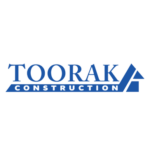Home & office automation
Electrical Wiring
Ask your electrician to run neutral wires to all junction boxes. Although most electricians do this as a matter of professional practice, making your preference known ensures you will always have a neutral wire available.
Neutral wires are required for most powerline home automation devices.
Request deep junction boxes. Deeper junction boxes will give you more room to work, accommodate deeper in-wall devices, and in general make your life a lot easier.
Have your electrical contract install (and wire) extra junctions boxes. If you don’t have a use for them at first, simply cover them with a faceplate. It is a lot easier to install extra junction boxes during the construction phase than it is coming back later and doing it.

Install Conduits
Install cable conduits everywhere you even could remotely anticipate a need for wires (of any kind). Cable conduits are separate from electrical conduit and are used to run speaker wire, video cable, network cable, etc. Install conduits in walls even if you don’t anticipate using them right away.
Again, it’s a lot easier to install a piece of conduit during construction than it is to fish speaker wire through a wall after the house is built.
Terminate your conduits into junction boxes, cover with faceplates and forget about them until you need them. Install at least one conduit and junction box at eye level in each room to accommodate a touch panel.
Industries
Education, accounting, solicitors, finance, construction, drainage, bars and cafes , hospitality.
Comms Cabinet
Build a small, centrally located cabinet for storing patch panels, distribution panels, media servers, etc.
Ensure your wiring closet is big enough to accommodate a rack with extra room for moving around and expansion. Make sure you install ample cable conduits in this room because much of your wiring will terminate here.
Speakers
Even if you aren’t installing a whole house audio system initially, you should plan for it in the future and wire every room for in-ceiling or in-wall speakers. Trust us, at some point in the future, you’re going to want to add whole house audio to your home. This will also allow for an intercom system via your audio system.
Planning Your Comms Cabinet
No two wiring Cabinets are the same and typically your cabinet will develop as your system grows. Having a little foresight can save you headaches & money in the future.
- Realize that one day you will need a comms cabinet. Plan on your automation system growing to the point you’ll want a central location to store everything.
- As you add new equipment or wires to your comms keep accessibility in mind. Whatever you put in your cabinet isn’t going to be installed once and forgotten; you will eventually want to change or move wires around.
The biggest mistake people make when planning and wiring a cabinet is putting equipment control panel fronts within easy reach and hiding wires away where they can’t get to them. Try to position everything so that it’s easily reachable. If necessary, mount panels on the walls. Always allow for adequate ventilation of electronic devices and install additional fans if necessary.
Elasniks well-designed comms cabinets provides both front and rear access to all equipment. Keeping everything organized and accessible will make the difference between a wiring cabinet you enjoy working in and one you dread.
How Do I Get Started With Home Automation?
CONTACT ELASNIK & Request your Building Plans to be reviewed or an on-site visit from an Elasnik engineer.
With so many options available, choosing a place to start building your home automation system can seem overwhelming. Most people find themselves confronted with seemingly endless questions and few answers. Having a little information and following a few simple rules will make the experience easier and less intimidating.
1. Don’t Stress Too Much About the Future – Is it necessary to plan out the whole house before making your first purchase or can you modify and change your mind as your system grows?
Answer – Just get started, your design will evolve over time. The industry is constantly changing and as it does, your building automation system will grow and change with it.
2. Buy Only What You Can Use – Do you buy one product initially or do you need several products to make it all work? Answer – You can do either depending on your budget. Most people start with Wireless Access Point products.
3. Start Simple . Once you become comfortable with the technology you will probably ask yourself the question, “What else can I do with home automation?”
Ensure Compatibility Among The Products You Buy
Home automation is a constantly evolving field. New products become available all the time and replace older outdated products. Don’t be discouraged.
Knowing a few simple basics about the types of devices you buy will allow you to plan for their eventual obsolescence. The secret is backwards compatibility. When purchasing new home automation products, check for backwards compatibility with the products you already have. When you choose products that are backwards compatible, you expand your system rather than replace it.
Recognize the Basic Automation Technologies
RF stands for radio frequency and requires no wiring to work. Most systems are either Powerline or RF or a hybrid of both. Hybrid devices are sometimes referred to as dual mesh devices (because they work in both environments).
X10 compatibility – Backwards compatibility most often refers to new devices working with older X10 systems. X10 is one of the oldest and most popular automation protocols (not to be confused with a company by the same name). Many older or legacy products use this protocol.
Services
Network security combines multiple layers of defenses at the edge and in the network
We offer for your convenience a way to save, this is our minimum base repair cost
Our security expert can remotely access your PC and clean it of all viruses
This is a per incident remote IT support service, no commitment just a simple request
Today it is almost a “have to do” for any new construction home Office being wired for automation
By using the Wireless Network, you agree to these terms and conditions
Our clients












Request a call back
Request a call back from our team of experts and we will call you as soon as its possible!


